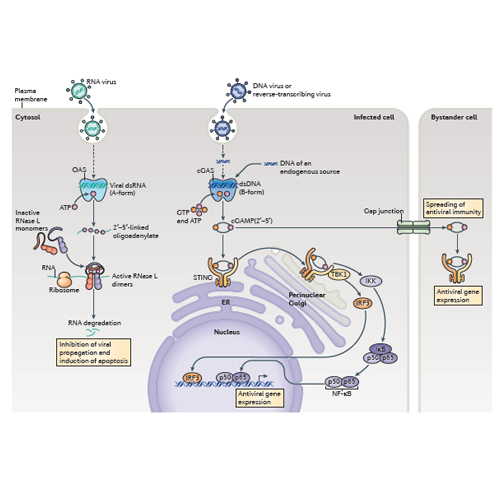OAS proteins and cGAS: unifying concepts in sensing and responding to cytosolic nucleic acids
18-Jul-2014
Nature Reviews Immunology, 2014, doi:10.1038/nri3719, 14, 521–528, published on 18.07.2014
Nature Reviews Immunology, online article
Nature Reviews Immunology, online article
Recent discoveries in the field of innate immunity have highlighted the existence of a family of nucleic acid-sensing proteins that have similar structural and functional properties. These include the well-known oligoadenylate synthase (OAS) family proteins and the recently identified OAS homologue cyclic GMP–AMP (cGAMP) synthase (cGAS). The OAS proteins and cGAS are template-independent nucleotidyltransferases that, once activated by double-stranded nucleic acids in the cytosol, produce unique classes of 2′–5′-linked second messenger molecules, which — through distinct mechanisms — have crucial antiviral functions. 2′–5′-linked oligoadenylates limit viral propagation through the activation of the enzyme RNase L, which degrades host and viral RNA, and 2′–5′-linked cGAMP activates downstream signalling pathways to induce de novo antiviral gene expression. In this Progress article, we describe the striking functional and structural similarities between OAS proteins and cGAS, and highlight their roles in antiviral immunity.











